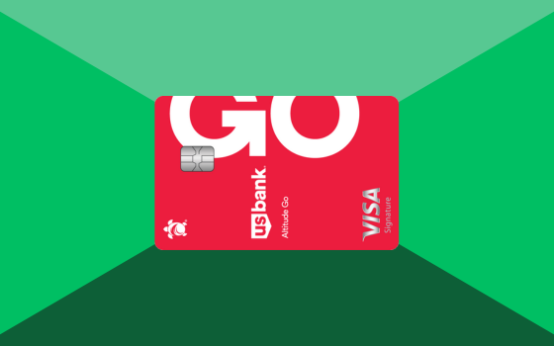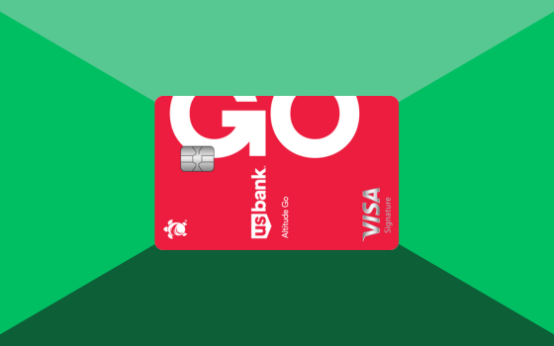If you’re carrying existing credit-card balances or eyeing a major purchase, the Wells Fargo Reflect Card can open up a wide window of opportunity. With an introductory 0 % APR on purchases and qualifying balance transfers for up to 21 months, this card offers more interest-free time than many competitors.
That said, it’s not just about the low cost—it’s about using that timing wisely. The 21-month window gives you breathing room, but after that period the ongoing APR jumps significantly. Knowing exactly what the card is and isn’t for will help you decide if it fits your financial strategy.
Why choose the Reflect Card?
Here are the standout reasons this card might make sense for you:
- Extended 0 % introductory APR period. For new card-holders, this card offers 0 % on both new purchases and qualifying balance transfers for up to 21 months from account opening.
- No annual fee. You’ll pay $0 each year just to keep this account open.
- Excellent for refinancing high-interest balances. If you’ve got existing credit-card debt at 20%+ APR, moving it to this card could reduce interest costs and help you pay down principal faster.
- Additional perks. The card includes benefits like cell-phone protection (if you pay your monthly phone bill with the card) and access to “My Wells Fargo Deals” which may give you statement credits when you shop with participating merchants.
- Clean, straightforward structure. No complex rewards tiers, no gimmicks—just a focus on providing a long interest-free period so that disciplined users can take advantage.
Requirements for approval: What you’ll need
Here’s what the issuer is likely looking at when you apply for the Reflect Card:
Minimum required credit score & credit profile
- The publicly-reported “recommended” credit score range for this card is “Good to Excellent.” One page lists that applicants with scores around 620–719 may face higher interest rates.
- Another data point shows the average approved applicant had a FICO® score around 697.
- Therefore: while the card may be accessible for some with fair credit, stronger credit history improves your chances and helps secure lower ongoing APR.
Income and other eligibility requirements
- You’ll need verifiable U.S. income or resources that show you can make the monthly payment obligations.
- Even self-employed or 1099 workers can apply, as long as you can demonstrate consistent income (bank statements, tax forms, etc).
- Standard identification: U.S. Social Security number or ITIN, U.S. physical address (issuer may not accept just a P.O. box), valid age (18+).
- You must apply according to the issuer’s eligibility rules (e.g., some cards with Wells Fargo restrict applicants who opened another Wells Fargo credit card recently).
How to improve your chances of approval
Here are basic and advanced tactics to help you boost approval odds for the Reflect Card:
Basic steps
- Check your credit report at least 30 days before applying and correct any errors (late payments, duplicates, wrong address) to optimize your profile.
- Ensure your income is clearly documented – have recent pay stubs, bank statements, or tax returns if self-employed.
- Keep existing credit utilization low (ideally under 30%) across all your cards so your credit profile looks less risky.
- Avoid applying for multiple cards in a short period – each hard inquiry and each new account affects your score and the lender’s view of you.
Advanced strategies
- If you are self-employed or a 1099 worker with irregular income, prepare a one-page summary of your income sources, show business bank statements, and highlight that your payments are consistent. Elders have gotten approved with scores in the low 600s when they brought a clean, coherent income story, e.g., “self-employed with score 620 but income of ~$45 k”.
- Leverage your existing banking relationship with Wells Fargo Bank: if you already have checking/savings with them, and you’ve maintained it well (no overdrafts, consistent deposits), mention that in your application (or branch conversation) to strengthen your case.
- Clear small balances on other cards before applying. If you have $500 on a card at 20% APR and maxed out, paying it down to $0-$50 can help your utilization and credit-risk view.
- Choose timing carefully: If your credit score recently jumped or you recently paid off a loan, wait until the score has updated (after ~30-45 days) so you apply with the best possible profile.
- Be realistic about long-term usage: Since this card is designed for intro offers, make a plan to pay down balances during the 0 % period and be ready at the end-period. Lenders like when applicants have a clear strategy rather than applying “just in case”.
Step-by-step: How to apply for the Reflect Card
- Visit Wells Fargo’s secure website and navigate to the Reflect Card application page.
- Fill out personal information: full name, address, date of birth, SSN/ITIN, housing status, monthly housing payment, and income.
- Provide employment status: employed (with employer name) or self-employed (with business name or description, income estimate).
- Review the credit-card terms: intro 0% APR period, regular APR ranges (which depend on creditworthiness), fees (look out for “balance transfer fee”, foreign transaction fee). For example, this card has a balance transfer fee of up to 5% (minimum $5) and a foreign transaction fee of 3%.
- Submit the application and wait for instant or near-instant decision. If approved, your card arrives in the mail; you may receive a virtual number sooner if available.
- Key strategy: Make sure you have a plan to maximize the 0% window—set up automatic payments, schedule a payoff timeline within the 21-month period to avoid high interest afterward.
FAQ – Real questions from real users
Q. Can I be approved if I have a poor credit history or “dirty name” (late payments, collection accounts)?
Possibly. The card is aimed at “good to excellent” credit, but applicants with fair credit might gain approval if other factors are solid (income, utilization, no recent bankruptcy). If you have recent charge-offs or bankruptcy, you may face denial or worse terms.
Q. What credit score do I need for approval?
While no issuer guarantees a specific minimum, publicly reported guidelines suggest you’ll ideally have a FICO® score around 670 or higher for easier approval and best terms. If your score is in the 620–650 range, you might still apply, but be prepared for modest credit limits or higher ongoing APR once the intro period ends.
Q. Do I have to be employed full-time?
No, full-time employment is not strictly required. However, you must show verifiable income or resources sufficient to cover the minimum payments. This includes part-time jobs, freelance/1099 income, or other consistent income streams.
Q. Are there any hidden fees or “gotchas” I should be aware of?
Yes. Even though the card has no annual fee, there are other costs:
- Balance transfer fee: up to 5% of each transfer (minimum $5).
- Foreign transaction fee: 3% of each purchase made outside of U.S. or in foreign currency.
- After the 21-month intro period ends, the ongoing APR may be very high (up to ~28.99% variable).
Alternatives if you don’t qualify or want a different focus
If your profile isn’t quite ready for the Reflect Card, or if you’re looking for rewards and different features, you might consider:
- A different 0% intro APR balance-transfer card from another issuer (with a shorter intro period but maybe rewards).
- A rewards cash-back or travel-rewards card if your credit is stronger and you carry little to no balance.
- A secured credit card if your credit score or history is very limited.
- Building up your score first (via on-time payments, low utilization, credit-building loans) and then applying later for a higher-tier product.
Conclusion
The Wells Fargo Reflect Card is a compelling offer if your goal is reducing interest costs, paying down debt, or leveraging a long interest-free window on purchases. Its strength is the 0% intro APR for up to 21 months and no annual fee. But it’s not aimed at consumers looking for rich rewards or travel perks.
If your credit profile is in decent shape (around 670+), your income is verifiable, and you have a plan to use the 21-month window effectively, this could be a smart tool. If not, consider strengthening your credentials first or reviewing alternative cards.
Compare, simulate and choose the best option based on your profile.
Want to know how to accelerate your approval process and optimize your application? Check the next page.
By clicking, you will be redirected to a new website.




